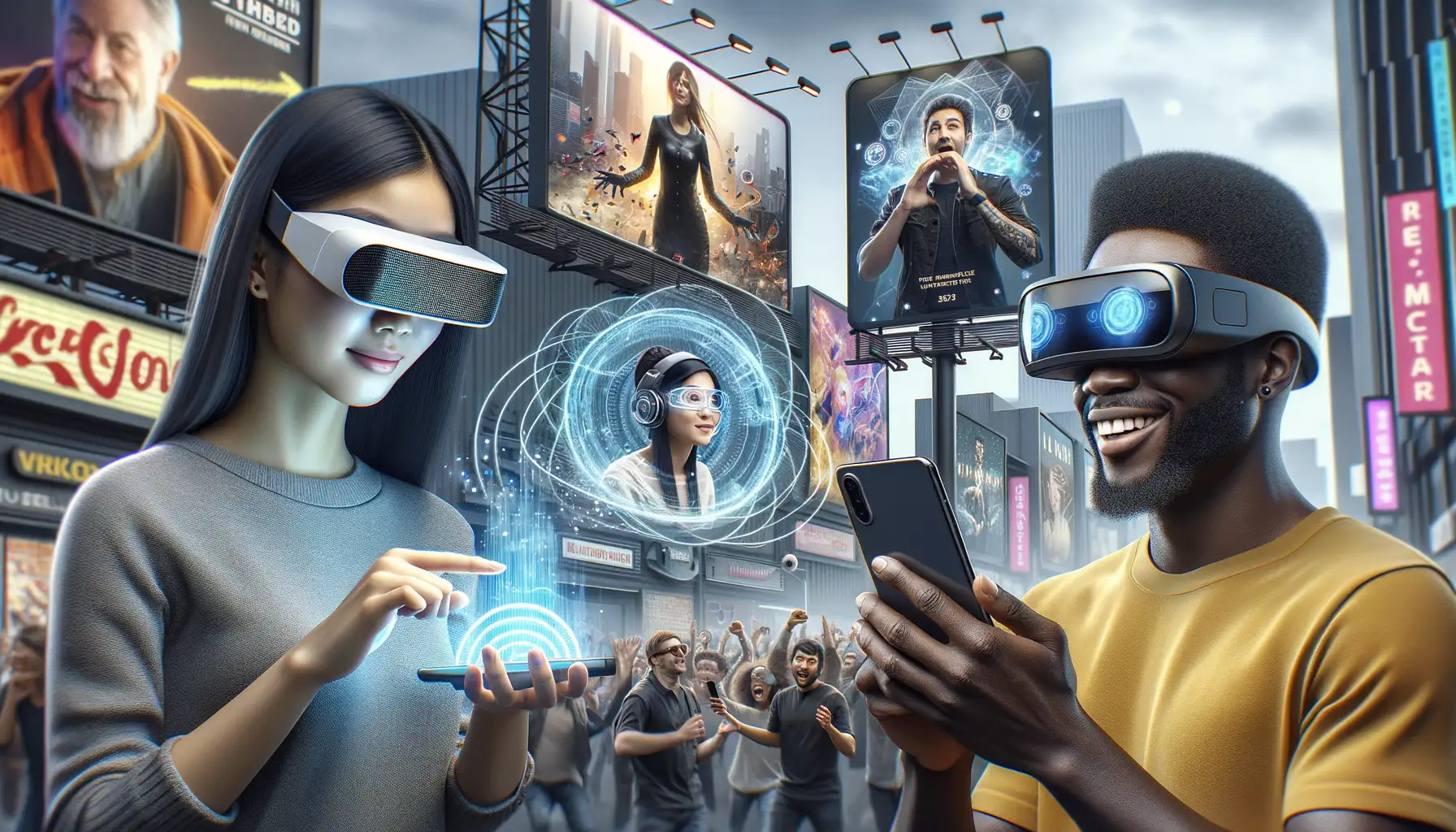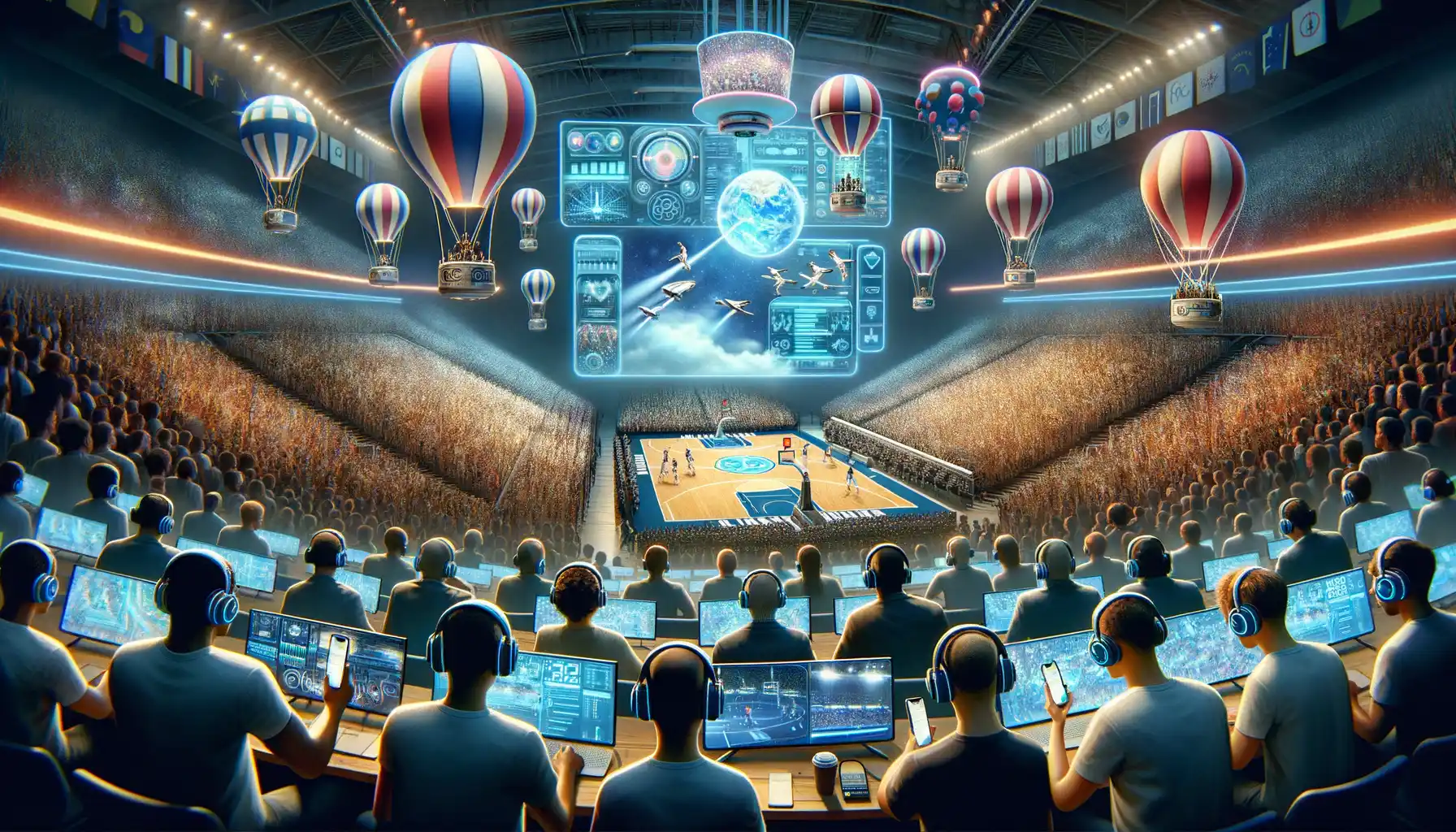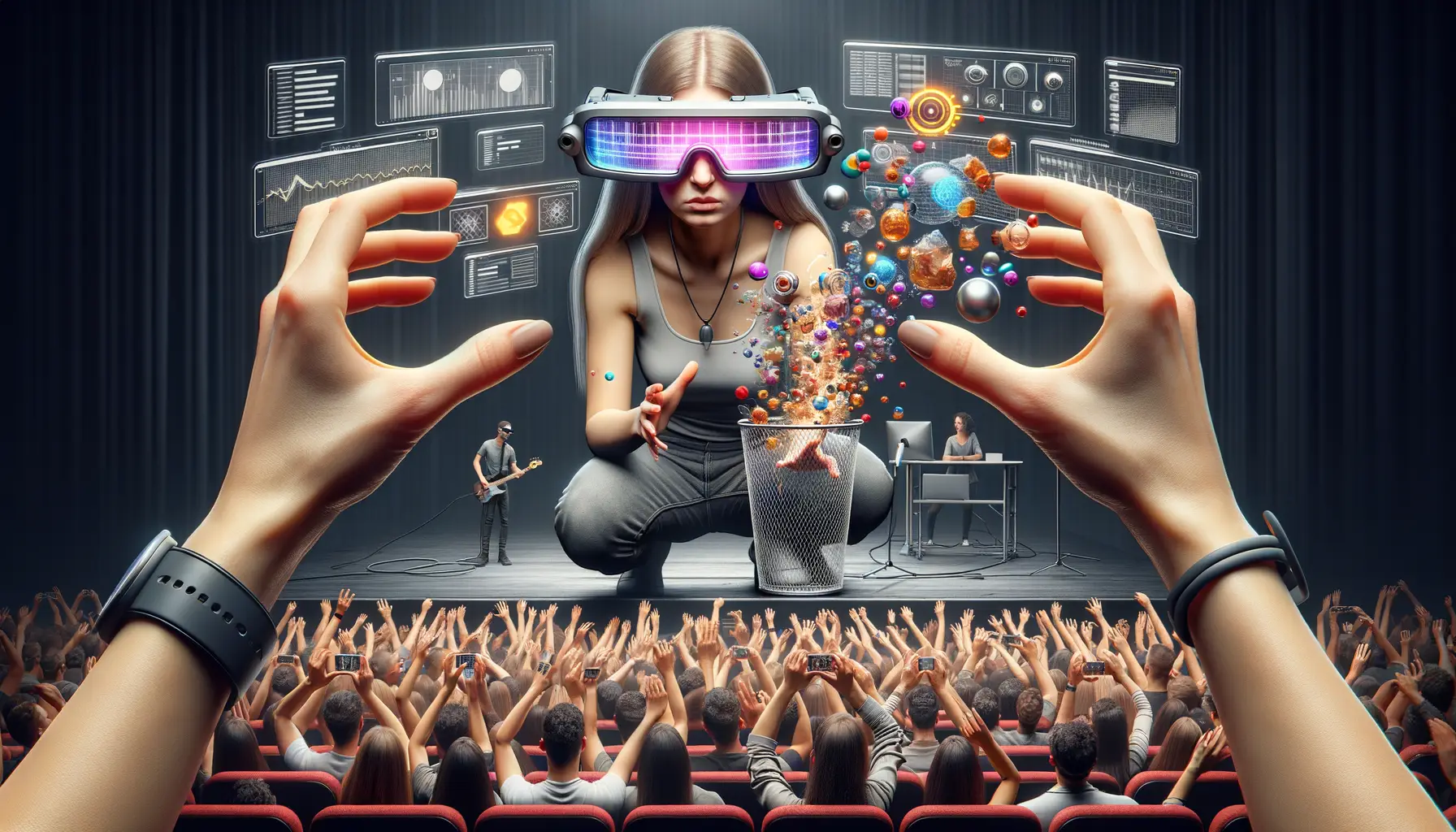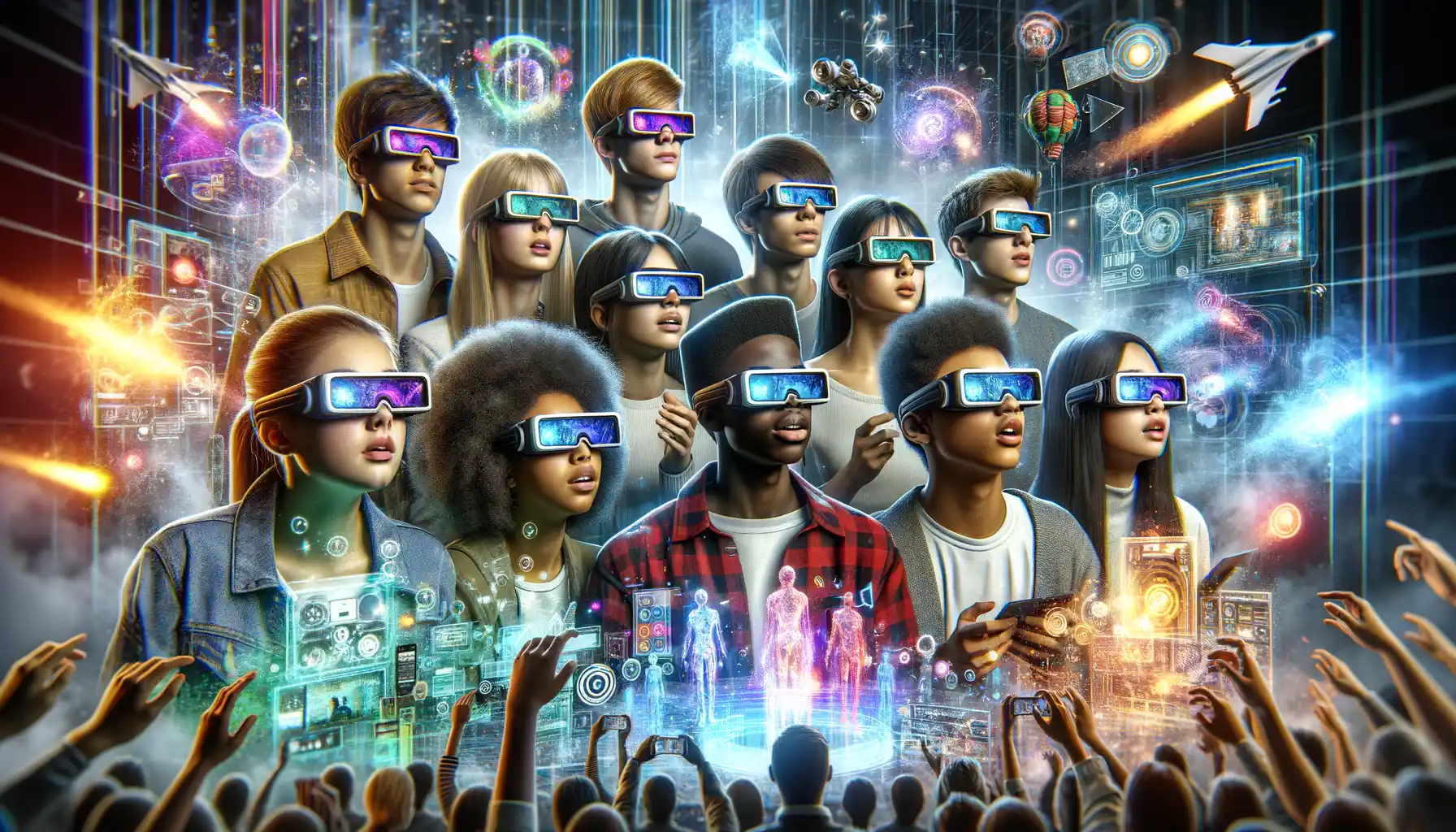Understanding Augmented Reality and Its Role in Live Performances
What Exactly is Augmented Reality?
Augmented Reality, or AR, is like slipping on a pair of special glasses that blend reality with dazzling digital elements. Imagine sitting in a packed concert and suddenly, through your phone or AR headset, neon butterflies begin to flutter above the crowd in sync with the music’s crescendo. That’s AR – a bridge between the tangible and the virtual, turning everyday moments into scenes from a sci-fi dream.
But AR isn’t just about fancy visuals. It’s about layering emotions, interaction, and storytelling into a real-world experience. Think of it as a digital artist painting directly onto the canvas of your surroundings. In live performances, this technology has opened doors to creativity we didn’t even know existed a decade ago. You don’t just watch anymore; you feel like a part of the performance itself, immersed in its heartbeat.
How AR Transforms Live Shows
Ever wondered how AR can turn a good show into an unforgettable one? Here’s what it brings to the stage:
- Interactive visuals: Imagine holographic band members jamming alongside the real ones, or virtual props appearing mid-air to tell part of the story.
- Audience participation: AR apps allow viewers to manipulate the visuals or even “step into” the performance using their phones or wearables.
- Enhanced storytelling: From projecting mythical creatures onto the stage in theater shows to illustrating lyrics during concerts, AR adds depth and dimension.
Picture this: A theater production of “Romeo & Juliet,” where an augmented starry sky mirrors the characters’ love-struck emotions. Or a DJ’s set where every beat generates an explosion of digital fireworks, responding in real-time to the crowd’s energy. That’s the magic AR brings—blurring the lines between audience and artistry, turning passive spectators into active participants.
Current Applications of AR in the Entertainment Industry

AR Transforms Gaming and Interactive Experiences
Step into a world where dragons perch on your coffee table, and alien landscapes come alive in your living room. The gaming industry has embraced augmented reality (AR) with open arms, creating immersive adventures that go beyond the screen. Think about how games like Pokémon GO turned urban streets into magical playgrounds, blending virtual characters with real-world backdrops.
But it doesn’t stop there. AR isn’t just about catching cute creatures; it’s pushing boundaries. From multiplayer AR battles where friends turn into rivals in the same room, to escape rooms that superimpose cryptic clues right on your walls—gaming feels more visceral than ever.
Here’s a quick taste of AR’s impact:
- Story-driven experiences: Games now let you walk right into an alternate universe, interacting with characters that feel eerily real.
- Customized avatars: AR mirrors you into a game environment where your movements shape gameplay in real-time.
Interactive escapism? That’s AR’s current golden ticket for gamers seeking adrenaline-fueled thrills.
AR in Music and Performance Art
Picture this: You’re at a concert, the bass thunders, but instead of static visuals, the stage bursts with holographic imagery. Singers are joined by virtual dancers, and the venue itself transforms with every beat. AR is redefining live music, offering fans a multi-sensory spectacle they can’t get at home.
Artists like Travis Scott and Björk have pushed the envelope, using AR to create performances that feel intimate yet otherworldly. In theater, it’s even more groundbreaking. Imagine watching Hamlet, except the ghost of his father hovers above the crowd, visible through AR glasses.
Music festivals have also jumped aboard the AR train. People aren’t just wearing flower crowns; they’re donning AR headsets that transform stages into dreamscapes and add another layer of connection between performer and audience. It’s not just entertainment—it’s emotion amplified.
Technological Innovations Shaping AR in Live Events

Breaking Boundaries: The Latest in AR Tech for Live Events
Step into the thrilling world of live performances, where technology and creativity collide like never before. One moment, you’re watching a guitarist on stage; the next, an enormous holographic phoenix bursts forth, its fiery wings lighting up the arena. This magic isn’t merely imagination—it’s the result of jaw-dropping technological breakthroughs in AR reshaping how we experience live events.
At the heart of these innovations is the rise of ultra-precise spatial mapping. With tools like LiDAR scanners, live event venues are being transformed into detailed 3D canvases, allowing AR content to interact seamlessly with the real world. Picture this: a virtual waterfall cascading down the side of a concert stage, perfectly aligned and responding to real-time lighting changes.
Other game-changers include advancements in wearable AR devices. Sleek smart glasses mean audiences no longer need bulky headsets to engage. And let’s not forget the role of 5G, minimizing lag and ensuring augmented visuals sync flawlessly with live performances.
- Cloud rendering: enabling heavier graphics processing offsite, so devices remain light yet powerful.
- AI-driven customization: tailoring AR experiences to individuals based on their preferences or even their location in the venue.
We’re not just “watching” anymore. Thanks to these innovations, AR is inviting audiences to step inside untamed creative landscapes. The line between spectator and participant? Blurred beyond recognition.
Challenges and Limitations of Using AR in Performances

When the Magic Hits a Wall: Technical Roadblocks
Picture this: A mesmerizing AR-enhanced concert with floating holograms and dynamic, interactive visuals. Sounds incredible, right? But behind the scenes, there’s a storm of challenges brewing.
First off, let’s talk tech. High-end AR performances demand serious hardware. We’re talking about ultra-powerful computers, dedicated servers, and projectors that could rival a small movie theater. Add to that the need for bulletproof internet connections—because let’s face it, a buffering hologram is a showstopper in all the wrong ways.
Then there’s the issue of synchronization. AR magic happens when digital and physical worlds align perfectly. One hiccup in timing, and what should’ve been a dazzling dragon swooping across the stage might end up looking like a blurry mess darting awkwardly into thin air.
- Latency nightmares: Even a half-second delay can ruin the illusion for an audience.
- Device compatibility: Not every phone or headset plays nice with AR tech.
The Human Factor: Creativity Meets Complexity
It’s not just the tech; creative minds face hurdles too. Choreographers, directors, and set designers suddenly need to think like software developers. How exactly do you choreograph around something the cast can’t see? You might ask performers to hit their marks based on invisible cues or jarring headset overlays.
And oh, let’s not forget cost. Crafting even a short AR spectacle means pouring buckets of money into development, testing, and implementation. Smaller venues? They’re often priced out of the game entirely. That raises an uncomfortable question: Is AR destined to remain an elite luxury?
The Potential Impact of AR on the Future of Entertainment

The Evolution of Storytelling with AR
Imagine sitting in a theater, watching your favorite play, when suddenly the stage transforms into a bustling city or an enchanted forest. With augmented reality (AR), this isn’t just fantasy; it’s the new frontier of storytelling. AR has the power to erase the boundaries between spectators and performers, pulling you into worlds so vivid and interactive, you’ll wonder where reality ends and the magic begins.
Instead of passively watching, audiences could soon:
- Step into historic moments during a documentary-style performance.
- Feel the rush of adrenaline as a virtual dragon roars inches from their seat.
- Interact with holographic characters who respond dynamically to their actions.
The days of mere observation are fading—AR invites us to become part of the story. It’s immersive theater on steroids, pushing the boundaries of what entertainment can be and turning every audience member into an active participant.
Revolutionizing Concerts and Music Experiences
Picture this: you’re at a concert, and instead of just watching the band perform, the entire venue becomes alive. Think glowing 3D graphics swirling above your head, or lyrics unfolding as animated skies that stretch endlessly. With AR, music isn’t just something you hear—it’s something you *see* and *feel*.
Platforms like AR-enhanced apps already hint at what’s coming next: personalized concert feeds, holographic duets with your favorite singers, or even collaborative jam sessions with virtual musicians. By marrying soundscapes with visuals in real-time, AR is poised to transform live performances into multi-sensory adventures. How’s that for redefining a night out?
Entertainment, as we know it, is no longer confined to screens or stages. It’s leaping out, one pixelated firework at a time. What’s more thrilling than that?

